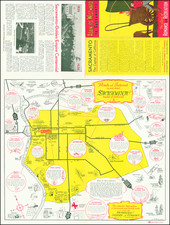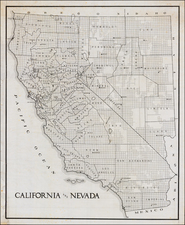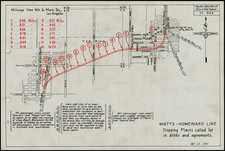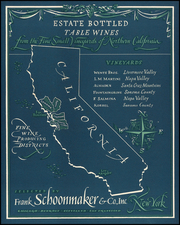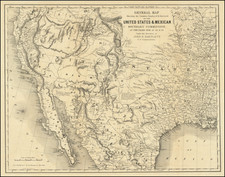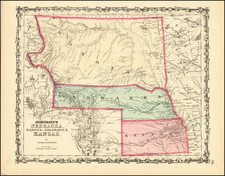Very rare example of Colton's map of the Southwest, the first time we have ever seen this map. Nevada is truncated at the bottom, so that Las Vegas is in Arizona. Utah is wider than its final configuration. A number of counties extend across most or all of Arizona and New Mexico. While at first blush, the map appears similar to Johnson's map of the same period, this map is vastly more detailed. There are many mining districts named and outlined in Southern California. A number of early wagon roads are shown, with US Forts each marked with American Flags. The routes surveyed by Emory, Simpson, Albert & Peck, Fremont, Gunnison, and others are shown, with years relevant to the survey. The Emigrant's Road, Fredonyers Trail and Pass, Pony Express and U.S. Mail Routes are shown. Excellent topographical detail, includes elevations. Many Indian Tribes and other interesting places are noted, along with annotations. This is definitely NOT just another Johnson Southwest. The borderless format is very rare and the cartographic detail substantially beyond that of Johnson or Colton. A nice example of this truly rare map. The configuration of Nevada was quickly corrected, so this edition rarely appears.
G. W. & C. B. Colton was a prominent family firm of mapmakers who were leaders in the American map trade in the nineteenth century. The business was founded by Joseph Hutchins Colton (1800-1893) who bought copyrights to existing maps and oversaw their production. By the 1850s, their output had expanded to include original maps, guidebooks, atlases, and railroad maps. Joseph was succeeded by his sons, George Woolworth (1827-1901) and Charles B. Colton (1831-1916). The firm was renamed G. W. & C. B. Colton as a result. George is thought responsible for their best-known work, the General Atlas, originally published under that title in 1857. In 1898, the brothers merged their business and the firm became Colton, Ohman, & Co., which operated until 1901, when August R. Ohman took on the business alone and dropped the Colton name.









